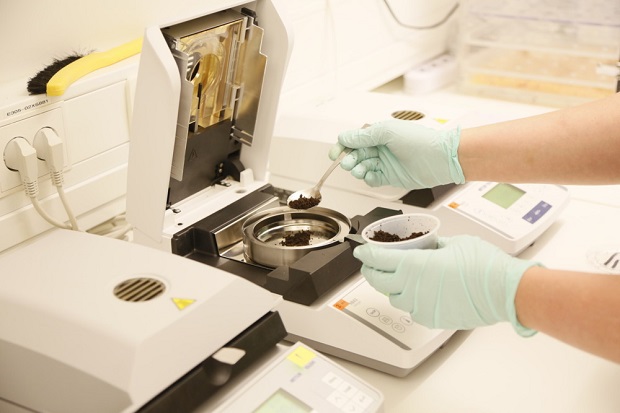- Daily & Weekly newsletters
- Buy & download The Bulletin
- Comment on our articles
The Swedish experience: How the snus tradition helped the country achieve smoke-free status
Sweden is now officially smoke-free and on track to become one of the first countries in the world to envisage a tobacco ‘endgame’. This elusive goal is defined by the World Health Organisation as less than 5% of the adult population smoking products that burn, such as cigarettes and cigars.
While across Europe member states are struggling to reach the EU target of eradicating cigarettes by 2040, Sweden finally achieved a record low of 4.5% of Swedish-born adults smoking in November 2024. Importantly, this feat is matched by the lowest cancer rates in the EU.
Key to the Scandinavian country’s success has been its tough stance on traditional tobacco products and ambitious strategy for safer alternatives to smoking. The latter include nicotine pouches, a modern oral tobacco product that is favoured by women and younger generations.

At the heart of the Swedish experience is snus, a derivative of snuff and a long-standing albeit odd cultural phenomenon. From its early origins as a royal luxury when Queen Catherine de Medici of France claimed it cured her headaches to a Swedish agricultural workers’ staple, the tradition boasts a fascinating journey.
Today, the moist tobacco product is packaged in small sachets that are placed between the upper lip and gum to deliver a smoke-free nicotine hit.
The Swedish Match flagship store in the centre of Stockholm is a temple for snus enthusiasts. An earthy odour contrasts with the minimalist and elegant interior. A walk-in chilled cabinet is filled with rows of different brands of the tobacco product, presented in colourful retro-styled containers.

On a nearby counter, a fresh delivery is being mixed with a variety of different aromatic flavourings. Coffee machines and Wi-Fi work areas add to the hip ambiance of this haven for the snus connoisseur.
From artisan commodity to industrialised production, the Swedish Match factory in Gothenburg is an example of the innovation that has overtaken the once rural practice. As snus is classified as a food product, it is subject to strict standards and hygiene rules.
The modern plant, employing some 400 people, is divided into snus and nicotine pouch production. For the former, the tobacco is first air- and sun-dried before being delivered to the factory. After being ground down in massive containers, water, salt, sodium carbonate and flavourings are added. The snus is then packaged as either a loose product or divided into portions.

Although new oral tobacco products, including snus, were banned by the EU in 1992, Sweden obtained an opt-out when it joined the EU in 1994. Many countries, Belgium included, have since outlawed nicotine pouches.
Despite the fears of a link between snus and mouth cancer, scientific studies have proved that there’s no increased risk, insists Patrik Hildingsson, a vice president of Swedish Match, the biggest manufacturer of snus, and an enthusiastic consumer himself.
“The combined science does not support the claim that snus causes oral cancer,” he says. Meanwhile, “lung cancer rates are half the European average” and oesophagus and stomach cancer levels are also decreasing.
Hildingsson points out that the lung cancer incidence for women in Sweden remains at an average EU level because snus use is predominantly a male habit. But nicotine pouches such as Swedish Match’s Zyn products have offered a unisex alternative and are behind the drop in smoking rates for 16 to 84-year olds.

After falling out of fashion from the 1920s due to the global uptake of cigarettes, the snus habit was revived in the 1980s when the health risks became known. Interestingly, says Hildingsson, this was a consumer-led initiative, a “Swedish exception” that led to the world-first decline in cigarette smoking. Despite these figures, the country is close to the EU average in terms of daily tobacco use, insists Hildingsson.
While a patchwork of different legislation governs tobacco use, Swedish Match, which was bought by Philip Morris International in 2022, is calling for differentiated excise taxation based on the risk profile of each product.
“Snus and Zyn are much better alternatives to cigarettes even if they are not entirely risk free,” says Hildingsson. “Why not ban cigarettes? he suggests provocatively.

For Patrik Strömer, secretary general of the Association of Swedish Snus Manufacturers, the marked difference in the 1990s between male and female smoking rates highlights the limitations of traditional government tobacco rules.
“Swedish men quit smoking five times higher than women, despite the same regulations, the same health warnings,” he says. “Snus played a major part in this because do you know anywhere in the world or any time in history where a group of men have acted in a less risky and more healthy way?”
Strömer likens the past 30 years of snus and nicotine pouch consumption to a large-scale live experiment. The only explanation for the drop in lung cancer rates was the fact that snus replaced smoking in Sweden, he says.
“It was only when nicotine pouches entered the market 10 years ago that we could see a similar pattern for women. So now we have two smoke-free generations in Sweden and both below the 5% rate for daily smokers.”
“Of course you can quit smoking without snus but I think it helps a lot of people achieve their goal of becoming smoke free.”
One of the major concerns worldwide is the question of youngsters taking up smoking after experimenting with nicotine pouches. To protect young people, Strömer argues that the age limit of 18 should be upheld.
Finally, he believes that Sweden should be the prime example for the benefits of smoke free products in Europe. “Other countries don’t have this tradition that we have but we didn’t use electric cars 10 years ago either.”
Citing the current 85 million smokers in the EU, he speculates that the figure could fall below 50 million by 2030 if nicotine pouches were allowed. “I’m quite confident that we can reach that, and if you’re a politician or responsible for public health, are you willing to do that for public health?”
Photos: Snus and Zyn ©Swedish Match/Peter Knutson; Swedish Match store; Snus Museum; Snus ©Swedish Match/Peter Knutson














